Can Hunting Be Conservation?
Recently, I was asked to make a video about hunting and how it affects conservation. I love this idea because I am a conservationist at heart and a scientist by trade. I also grew up hunting. My whole midwestern family hunts. Here is what has me thinking: how can you make the following statement?
To a hunter, I think this statement makes complete sense. To someone opposed to hunting it makes no sense at all. I think there is truth somewhere in the middle, and if you’re a hunter, I think it’s important to understand what a statement like this really means.
Is Hunting Something Really Conserving it?
First, let’s be clear. If you shoot something, you’re not conserving the thing you just shot. You could conserve the pelt, the antlers, or the memory of that animal, but that animal is gone. However, you might be doing something that helps conserve the species, the habitat, or the region’s biodiversity. This is a big “might.” You can’t just claim to be a hunter and a conservationist unless you understand how you, as a hunter, fit into the greater scheme of conservation.
So let’s step through how hunting can or cannot help in conservation. The first, most logical step is to start with an understanding of conservation in general.
What Does Conservation Mean?
Conservation is defined as the act of preserving, guarding and protecting. When talking about a single animal, hunting doesn’t fit the definition. It’s only in a broader sense—where conservation refers to protecting and preserving biodiversity, the environment and natural resources—does hunting have value. If, through hunting particular species, we are able to protect the vast diversity of animals and plants in an area then maybe hunting is important to conservation.
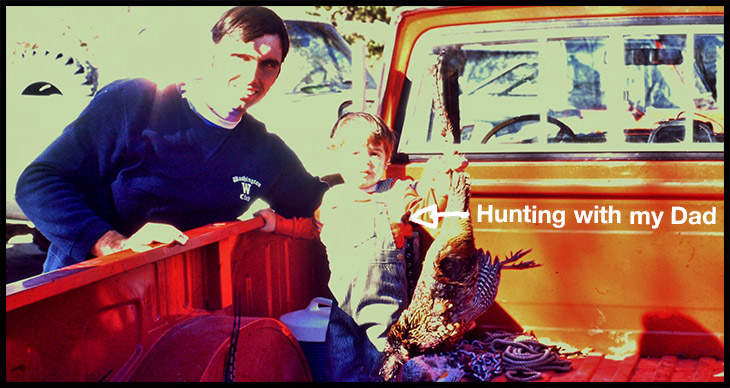
I think conservation should be focused first on sustaining biodiversity. Hunting has an important role here that I’d like to discuss. However, before we go on, it is important that we all agree on this definition of conservation. If you’d rather agree that conservation simply means the survival of the species you’re hunting, I think our common ground may fall apart. For example, if you’re only interested in what you can do to make sure you keep a population of wild pigs, as opposed to how you can manage wild pigs to keep a healthy ecosystem, I don’t think you can call it conservation.
My Hunting/Conservation Story Disclaimer:
This is an extremely tricky subject to do a video on because the intricacies of hunting and conservation also depend on the region of the world you’re in. They are dependent on local laws, the culture of the people, some history, and the biology of the organisms.
For example, the recent discussions of trophy hunting in African countries bring up a completely different set of issues than those we deal with in the US. Some of those countries have banned hunting (like Kenya) and other countries (like Zimbabwe) seem to have used hunting to fuel great conservation success stories. We don’t have the same problems of poaching, extreme poverty, and hunting for bushmeat. Simply put, you can’t lump hunting around the world together as one concept. Here, I’ll be discussing hunting only in North America.
A Reality Check
What would things be like if nobody hunted? Would everything fall apart? I don’t think it would. Animals and plants would find an equilibrium. They’d probably eat a lot more of our crops, predators would eat our cats, and there may be more animal-borne diseases to deal with, but we’d probably see a lot more animals. Countries like Bhutan, where the population is mostly Buddhist and people don’t hunt, are pretty nice. However, we don’t have that history.
I come from a country where, culturally, some people like to hunt. A lot of people like to shoot things for sport or leisure. In fact, the common hunter is part of why the passenger pigeon (our most beautiful and abundant pigeon) went extinct in 1914. They say flocks of them blackened the sky. Now, they’re gone.
In fact, in the 1800s we lost a lot of species and almost lost many others, like the bison. In that case, hunters were not part of the solution; they were the problem. Fortunately, some American leaders realized what was happening and decided to make sure there were animals left for us all to enjoy (and potentially hunt) in the future. To be clear here, this change was in part because the hunting elite at the time, who lived in big cities, wanted to make sure they could keep hunting. So, when hunters claim that we have what we have now because of “hunters,” it’s important to realize nearly everyone hunted. It took a conservationist hunter to give us what we have today.
Essentially, America had to find a way to conserve things so that we didn’t lose more of our abundant wildlife. The solution was in part what we now call the North American Wildlife Conservation Model.
The North American Wildlife Conservation Model
This model isn’t as much a set of rules as it is guidelines for making decisions. It is articulated officially by organizations such as The Wildlife Society (as seen in this publication). Here are the basic principles:
#1 – Wildlife as a Public Trust
Essentially, no individual owns the wildlife of the land. Instead it’s owned collectively by the public and managed by the national and state governments as a resource for everyone. In other words, if you own land, you don’t own the wildlife on it.
#2 – You Can’t Sell Native Animals
By making it illegal to sell and trade North American wildlife, this ensures that a market is not created that might otherwise reduce numbers of native species. This includes wild game meat, bird feathers and native species in the pet trade. It’s why hunters don’t sell their deer meat.
#3 – Allocation of Wildlife By Law / not Free Market
In other words, animals are protected and managed by governmental laws, not by market principles, public status (elites), or land ownership. Laws that regulate access to wildlife include the Marine Mammal Protection Act of 1972 and the 1973 Endangered Species Protection Act.
#4 – Hunting Opportunity for All
Every citizen has an opportunity, under the law, to hunt and fish in the United States and Canada. This makes sure we don’t get a ruling class that decides it’s going to have the exclusive right to hunt. It’s also in part why in-state hunting tags are so cheap.
#5 – Wildlife Use Must Have Purpose
This means we should not kill wildlife for frivolous purposes. Every reasonable effort should be made to use all aspects of the wildlife, including food and fur. This principle essentially shuns trophy hunting just for the horns, heads or skins.
6 – International Resources
Because birds and other game migrate across international boundaries, several international treaties have established that wildlife is an international resource as well. Thus, the management of these species is regulated by cooperation of management agencies across borders as well as through international treaties.
#7 – Scientific Management
Wildlife should be managed via sound science. Basically, it’s important to study and understand the population dynamics, behavior, and habitats of wildlife so that decisions come from that research instead of interests solely based in hunting, stocking and culling predators.
In Summary
In short, these seven basic principles act as guidelines for the government to manage fish and wildlife populations at optimum levels for eternity. It also makes sure that decisions are based in science. It also essentially states that part of the goal is that everyone can keep hunting. That means these guidelines include hunting in their definition of conservation.
For conservationists interested exclusively in keeping biodiversity levels high, I think hunting also has a great role as well. Here is how:
What Does Hunting do for Conservation?
Hunting does two main things for conservation. One, it acts as a funding source for state agencies that help conserve habitat. While this money could come from somewhere else, the reality is that in North America, much of it comes from hunting (more on the funding model in a second). Secondly, it helps control prey species (deer, elk, bison) who might otherwise have population explosions due to reduced predator populations (reduced from hunting). Let me touch on the specifics of each of these.
Hunting Funds Conservation
Just over half of the Department of Fish and Wildlife is funded by hunting. For example, here is the breakdown of where funding comes from in Idaho:
Hunters do fund just over half of the Department of Fish and Wildlife. That Department in-turn spends a big % of the budget to directly support hunting activities (working on getting these exact numbers). That means that a lot of the money hunting raises is able to go into basic scientific research of plants and animals (I’m really hoping that hunting raises more money than is spent on it. I’m still looking for these numbers).
Additionally, XX dollars is used every year to buy up new land and protect it with the sole purpose of allowing hunters to hunt on it in the future. The benefit is that these areas are also conserved for the thousands of other species that use the habitat.
To summarize it, here are the main activities that hunting dollars support:
- Research on Wildlife
- Buying Land for the Refuge System
- Wildlife Management Programs
- Purchasing Lands Open to Hunters
- Hunter Education Programs
Hunting Controls Populations
If you’re a hunter, you’ve probably heard that hunting deer helps keep populations in check. That’s true. We have lost the predators that might keep deer in check naturally, so deer populations have the potential to go out of control. But what does that mean? Why would that even be a problem?
First, herbivores in large numbers can destroy vegetation. In fact, the Nature Conservancy considers an overabundance of deer in the eastern US to the be the greatest threat to the forests – even more than climate change. They selectively eat certain species, changing the dynamics of the forest. They decrease songbird abundance. In fact, they decrease biodiversity across a wide range of taxa.
Secondly, deer and other prey species spread diseases. In particular, they are a major host for Lyme disease, which is causing huge problems in the United States. Ticks feed on the deer and then pass the pathogen to humans. In fact, I did a video about the ecology of Lyme disease here.
Third, too many deer, elk and moose can cause real problems for motorists. In fact, in 2003 there were 1.5 million deer-related collisions, injuring 13,713 people and causing $1.1 billion in vehicle damage.
Some of the Problems
I live in a forested area of NC with 1,200 acres abutting my property. Yet, I have never seen a deer in the 5 years I’ve been here! When a state issues deer tags, they cannot control where you hunt for deer. Because I’m in the outskirts of a large city like Charlotte, my woods are over-hunted. Other areas are under-hunted.
I also live in prime cougar, bear and wolf country, yet have never seen any of these. In fact, the eastern cougar was recently declared extinct. Part of why we need hunting is because we lack predators. I won’t get into predator hunting here; that could warrant an entire series to do it justice.
Finally, if the major funding source for conservation programs comes from hunting, then a decrease in hunting enthusiasm means those very departments are in trouble. In fact, that’s what is happening around the country. Here is a quote from the Arizona Game and Fish Department:
“In some states, the number of hunting and fishing licenses sold has remained stable in recent years. But given the rate of population growth, particularly in Western states, the percentage of people participating in hunting and fishing is actually decreasing. There is no alternative funding system in place to replace the potential lost funds for conservation. If hunting ends, funding for wildlife conservation is in peril.”
It does seem a bit backwards that we should now encourage hunting for the sake of keeping our agencies funded. In the past, almost everyone hunted. We used hunting to fuel conservation so that we could all hunt and enjoy the wildlife. Things are changing, and it seems like the model will adapt and change with it. Let’s just hope wildlife conservation doesn’t suffer because of changing trends.
Hunting Can Equal Conservation
Hunting won’t go away anytime soon. It’s part of what our country was founded on. It’s a great privilege and something humans have done for all of our existence. Our model in North America works so conservation of lands and hunting can coexist. I’m glad we have the opportunity to use hunting to aid conservation efforts.
Hunting in tandem with good science can help conserve all species if done right. It’s fun to think about. If you’re a hunter, it’s good to know where you fit into this great conservation mix. No matter what you love about nature, surely you want to protect it. As a hunter, you can do your part. The great thing is that you can have your cake deer and eat ’em too.
An Example of How Hunting Can Be Conservation
Recently, I went out to a small reserve in southern Georgia to talk about ways to communicate how valuable our wild places really are. While out there discussing we did a half-day quail hunt. From footage on that trip I made this.
Resources
- Hunting for Large Carnivore Conservation
- Trophy Hunting and Wildlife Conservation in Zambia
- Chollet, S. and J. Martin. 2012. Declining woodland birds in North America: should we blame Bambi? Diversity and Distributions doi: 10.1111/ddi.12003.
- Too Many Deer: A Bigger Threat to Eastern Forests than Climate Change?
One thought on “Hunting and Conservation”
Comments are closed.

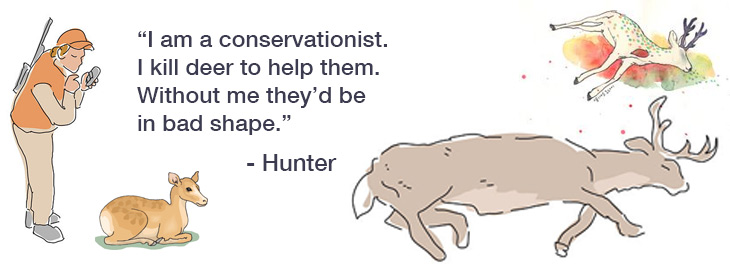
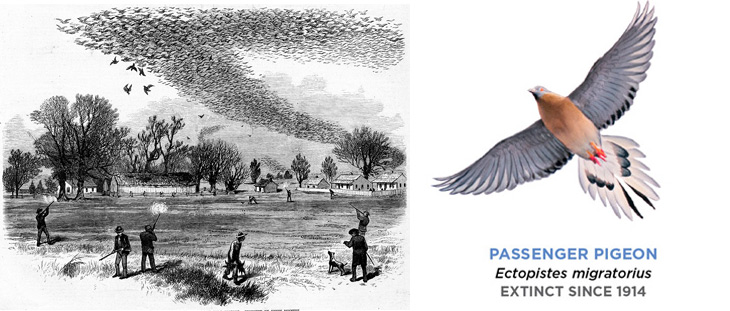
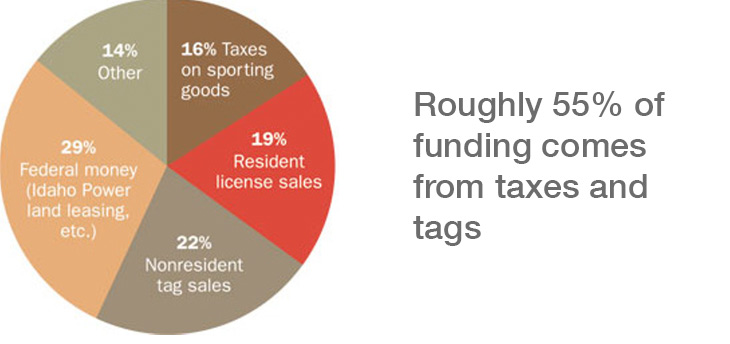
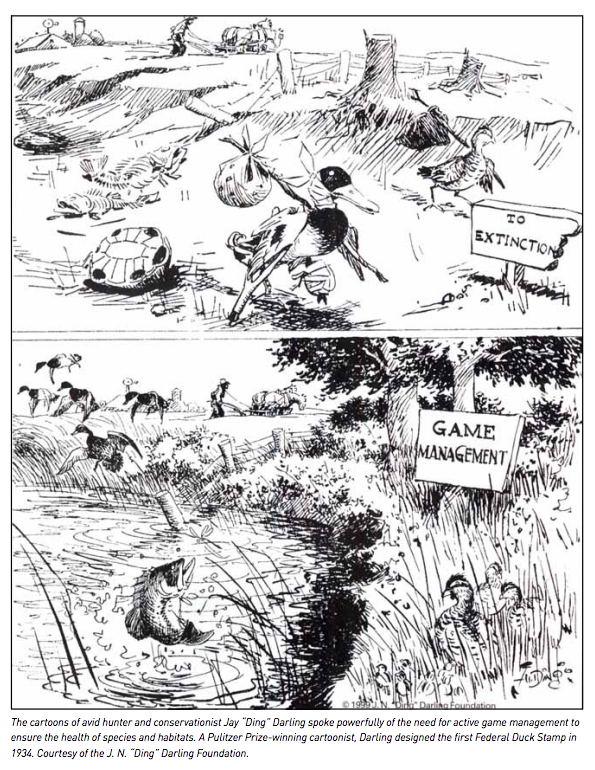
































































































Wonderful article.
Congratulations